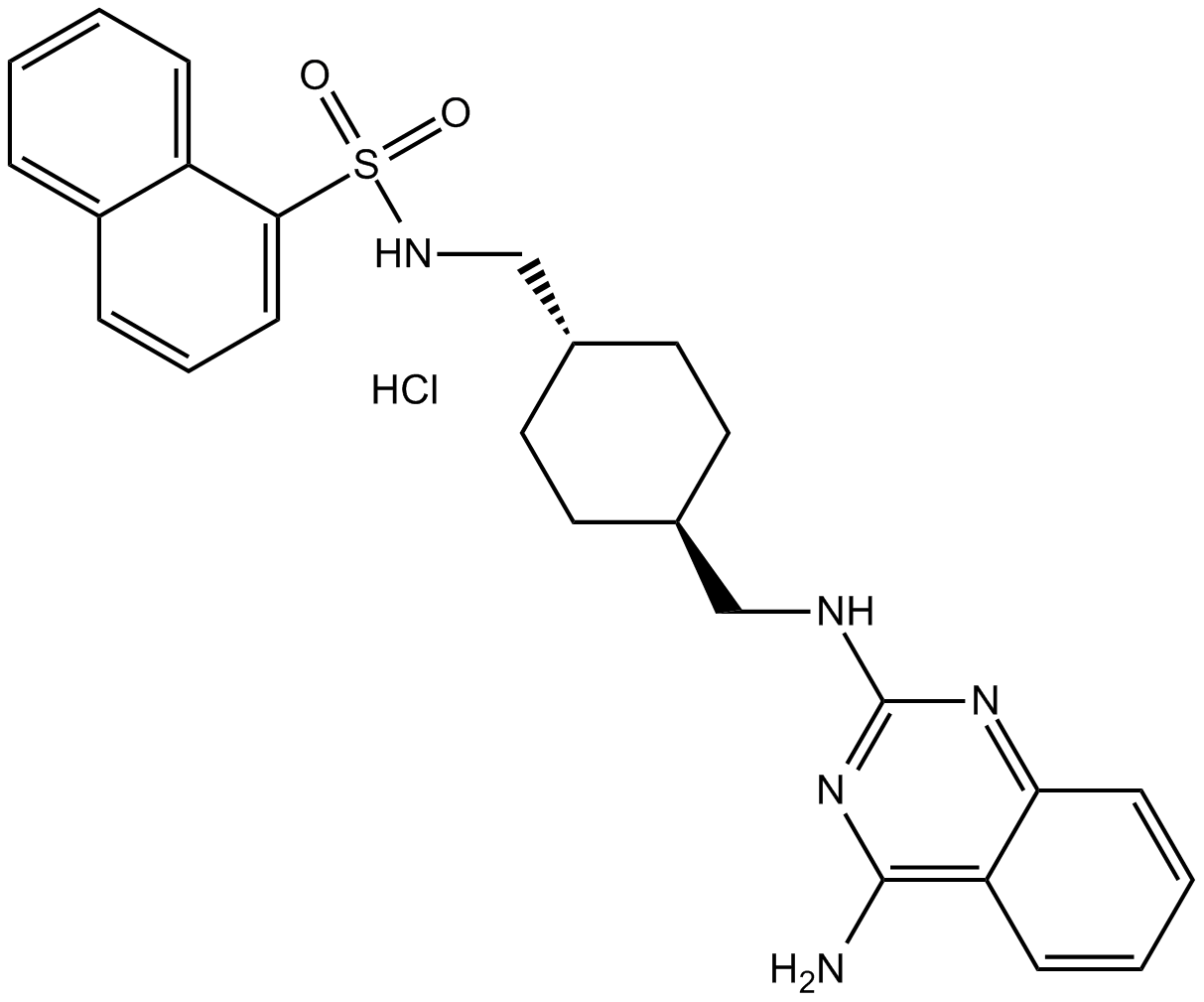CGP 71683 hydrochloride (Synonyms: CGP 71683A) |
| Katalog-Nr.GC10167 |
CGP 71683-Hydrochlorid ist ein kompetitiver Neuropeptid-Y5-Rezeptorantagonist mit einem Ki von 1,3 nM und zeigt keine offensichtliche Aktivität am Y1-Rezeptor (Ki, \u003e4000 nM) und am Y2-Rezeptor (Ki, 200 nM) in Zellmembranen.
Products are for research use only. Not for human use. We do not sell to patients.

Cas No.: 192322-50-2
Sample solution is provided at 25 µL, 10mM.
CGP71683 hydrochloride is a competitive neuropeptide Y5 receptor antagonist with a Ki of 1.3 nM, and shows no obvious activity at Y1 receptor (Ki, >4000 nM) and Y2 receptor (Ki, 200 nM) in cell membranes.
CGP71683 hydrochloride is a competitive neuropeptide Y5 receptor antagonist with a Ki of 1.3 nM, and shows no obvious activity at Y1 receptor (Ki, >4000 nM) and Y2 receptor (Ki, 200 nM) in cell membranes[1].
CGP71683 (15 nmol/rat, icv, twice daily) shows anorexigenic effect, reducing food intake and bady weight of fed rats. CGP71683 causes 3-times higher serum total T4 and 37% increase in free T4 in the fasted rats than in the fasted controls rats[2].
Reference:
[1]. Lecklin A, et al. Receptor subtypes Y1 and Y5 mediate neuropeptide Y induced feeding in the guinea-pig. Br J Pharmacol. 2002 Apr;135(8):2029-37.
[2]. Costa-e-Sousa RH, et al. Central NPY-Y5 receptors activation plays a major role in fasting-induced pituitary-thyroid axis suppression in adult rat. Regul Pept. 2011 Nov 10;171(1-3):43-7.
Average Rating: 5 (Based on Reviews and 33 reference(s) in Google Scholar.)
GLPBIO products are for RESEARCH USE ONLY. Please make sure your review or question is research based.
Required fields are marked with *




















